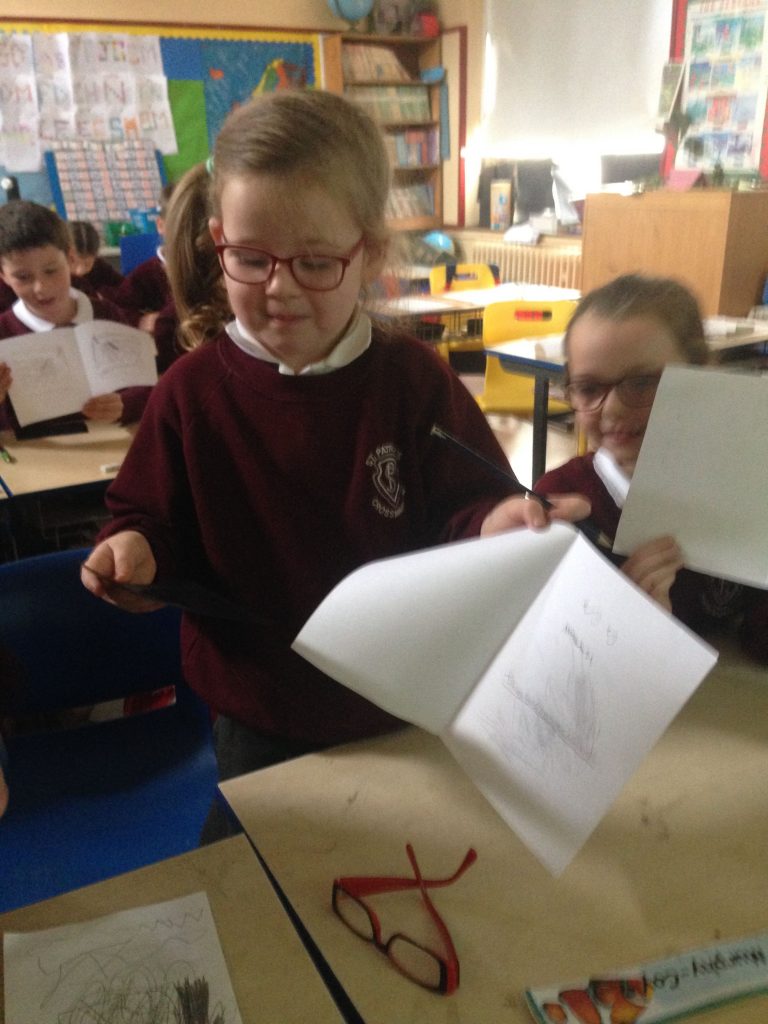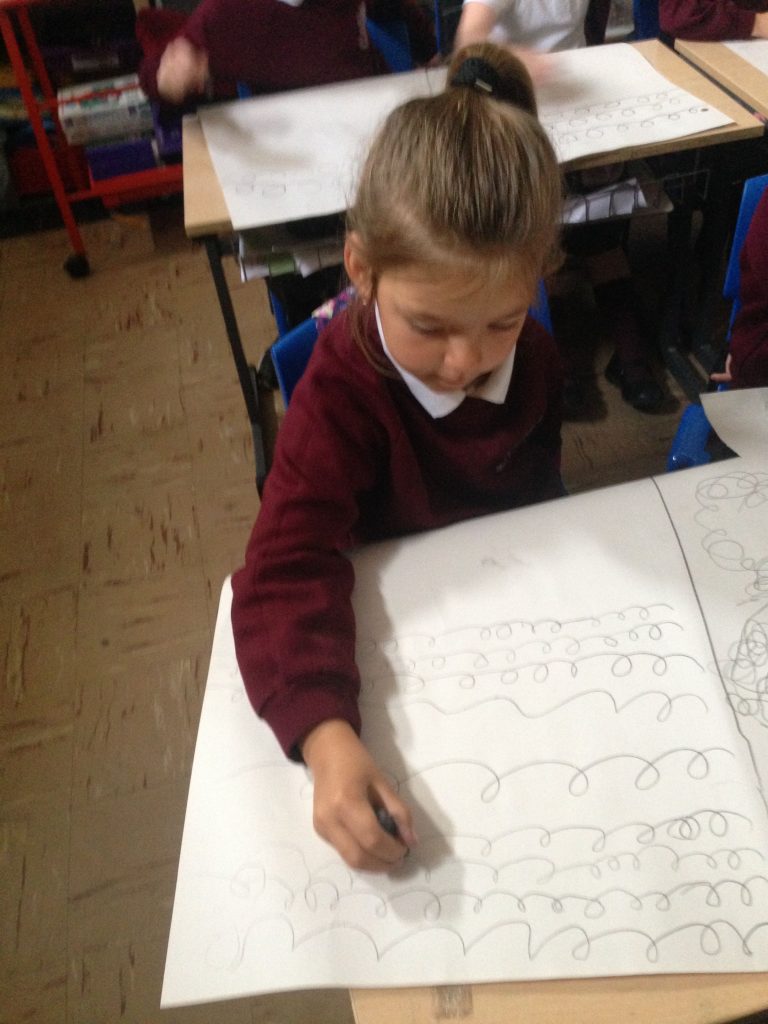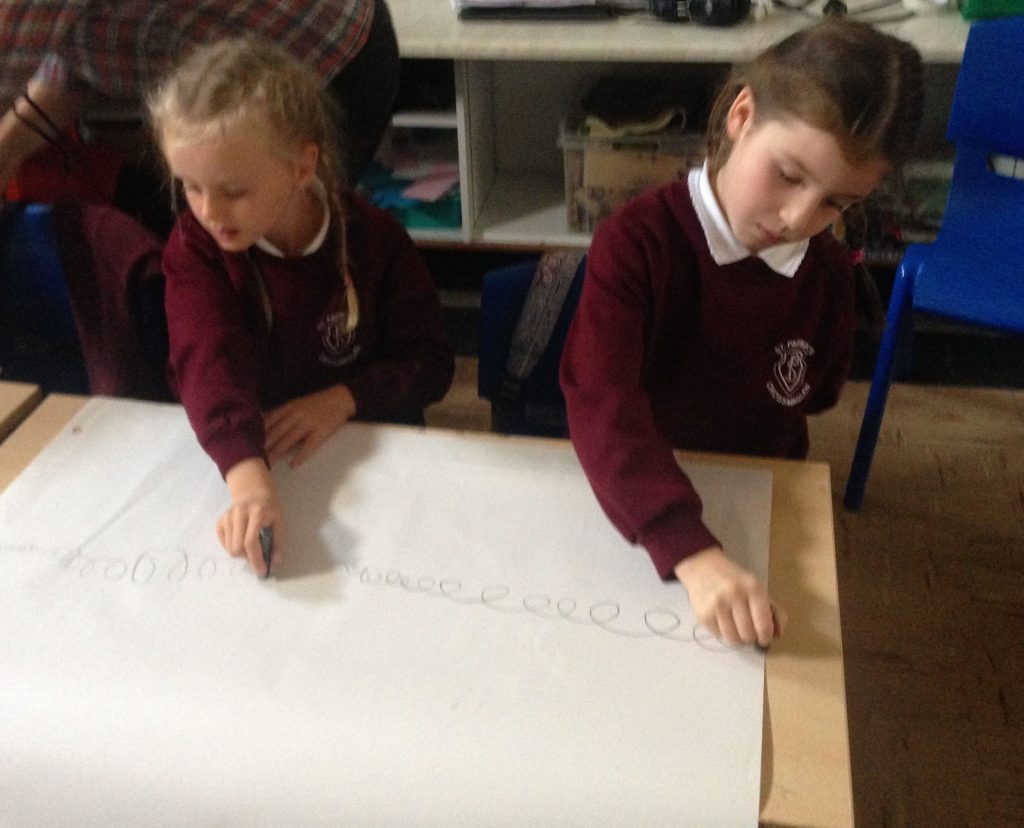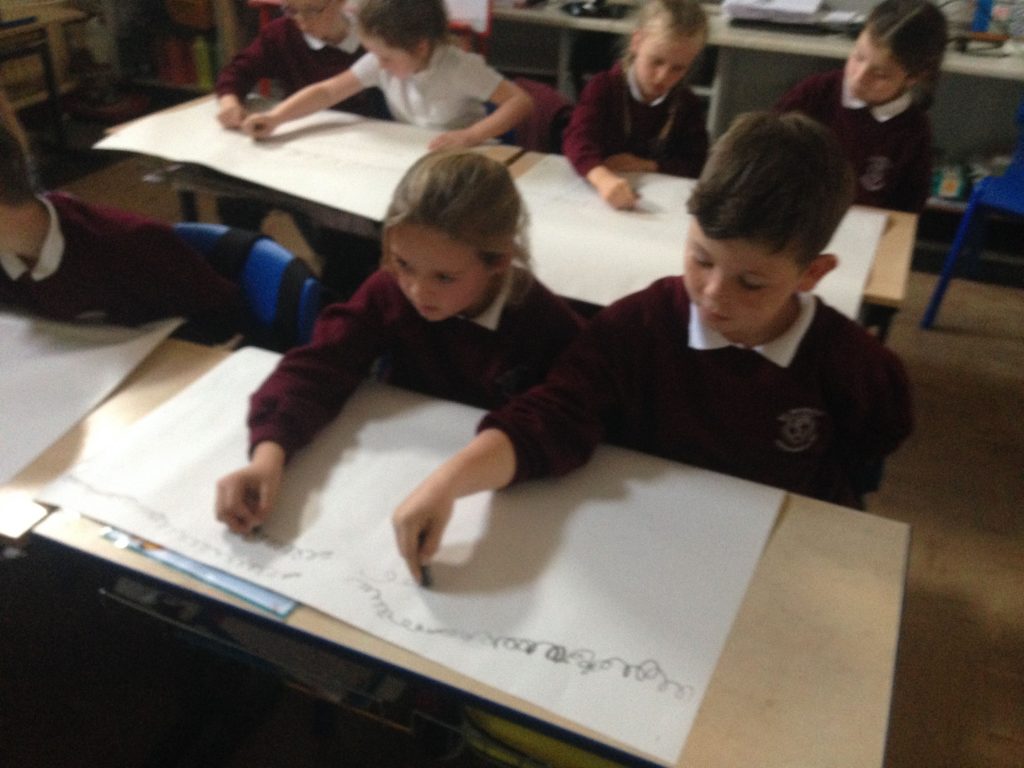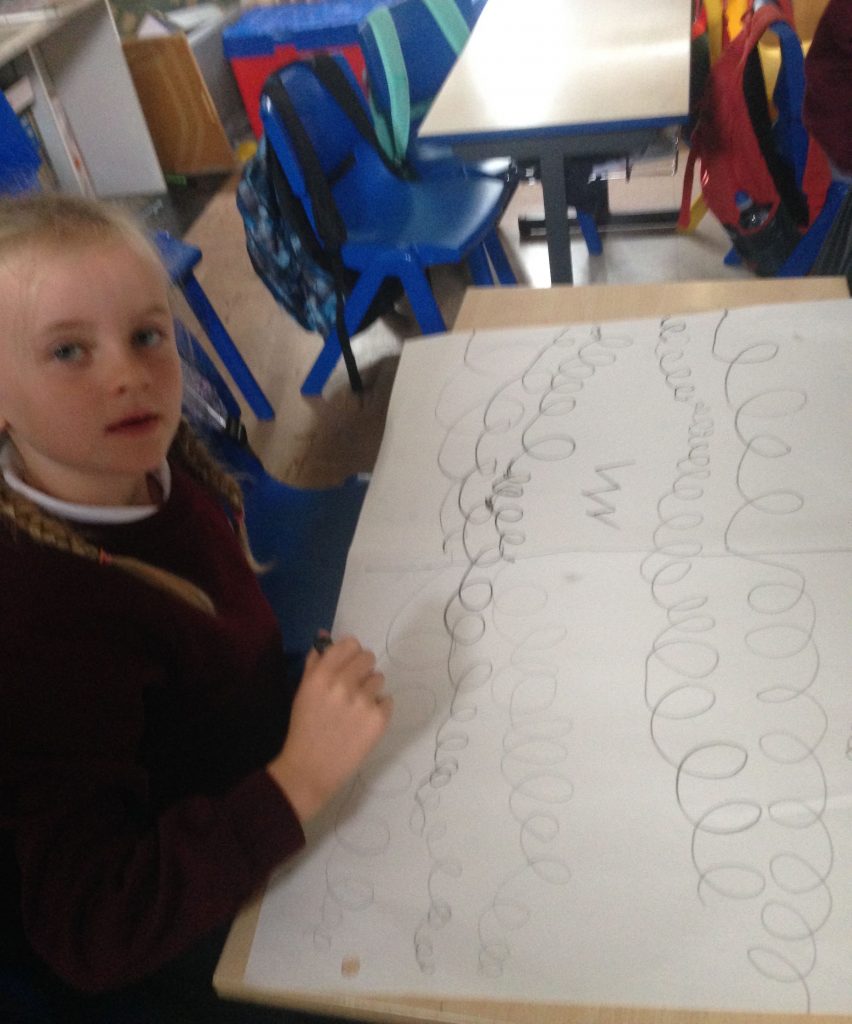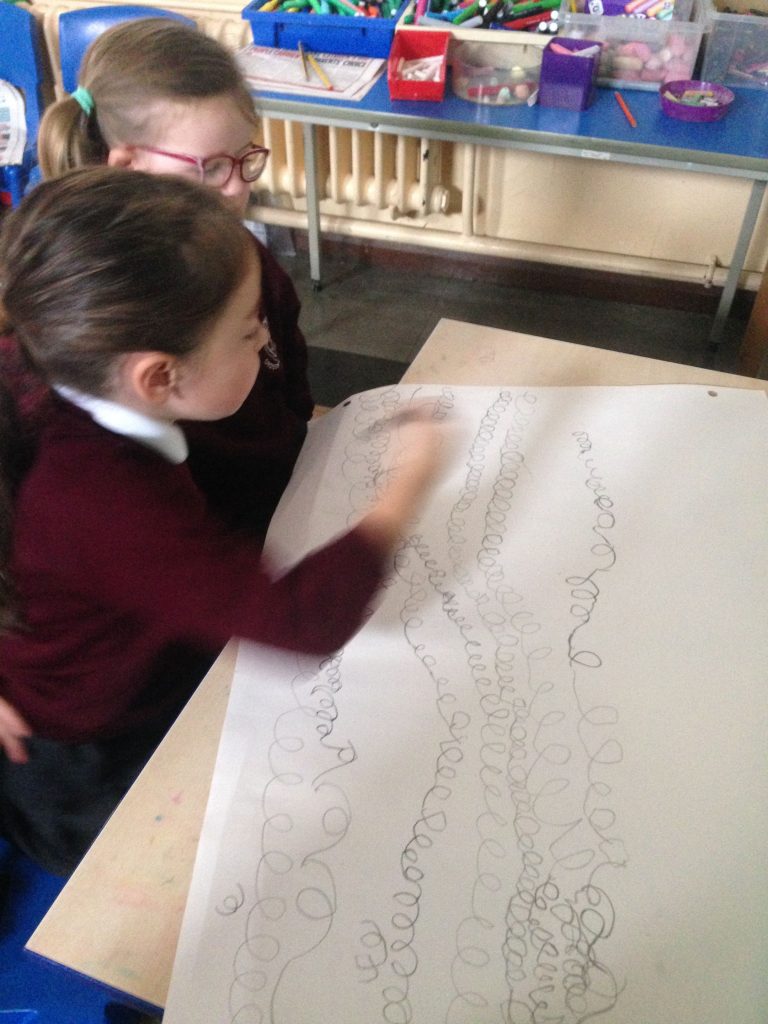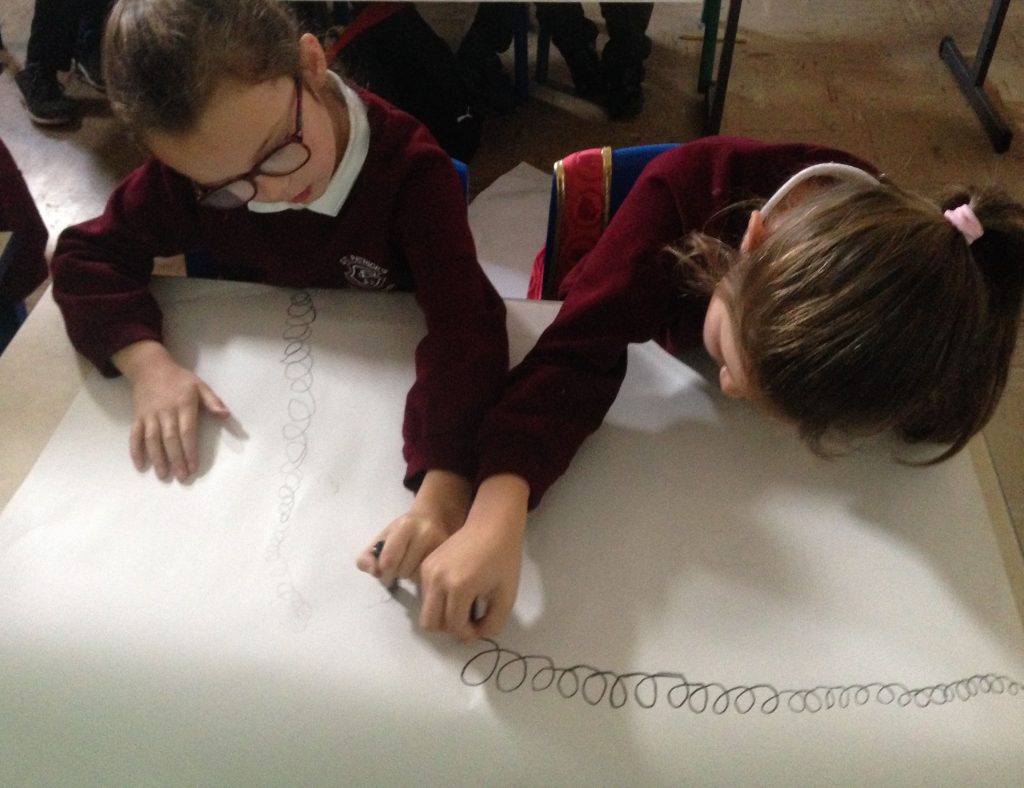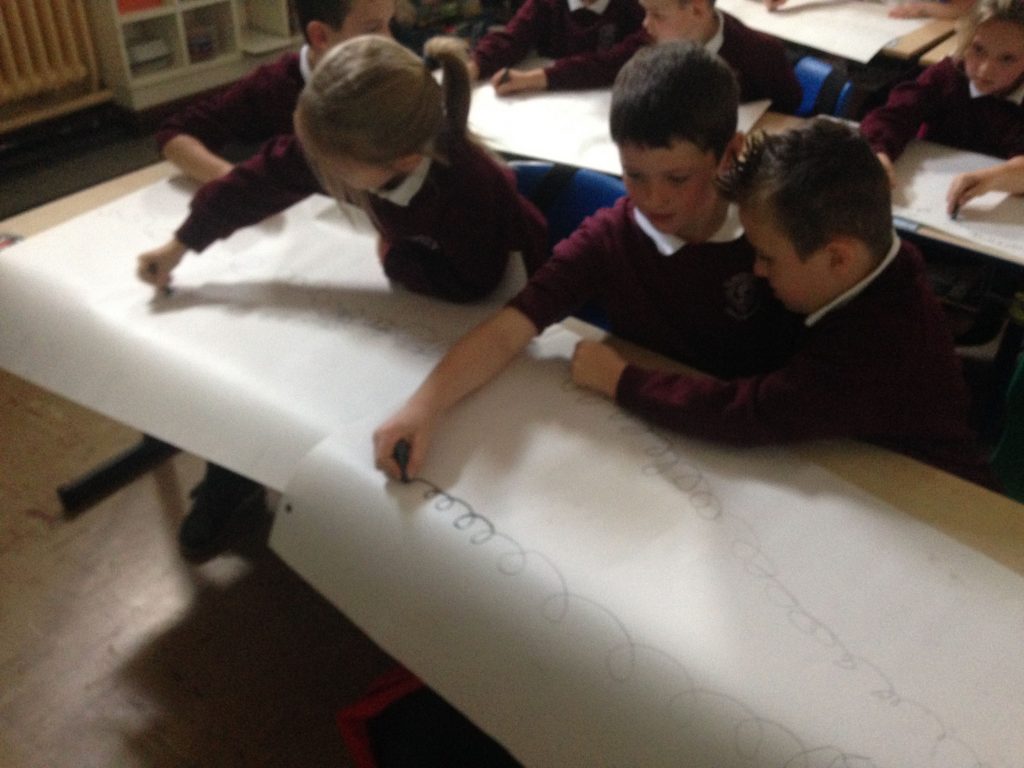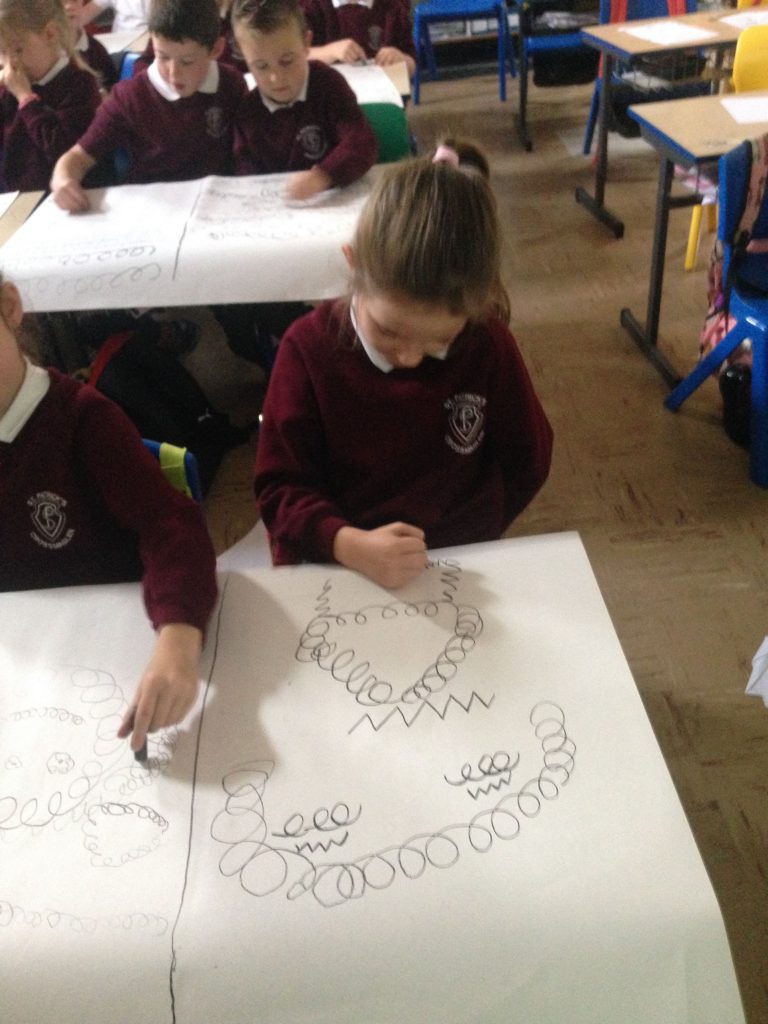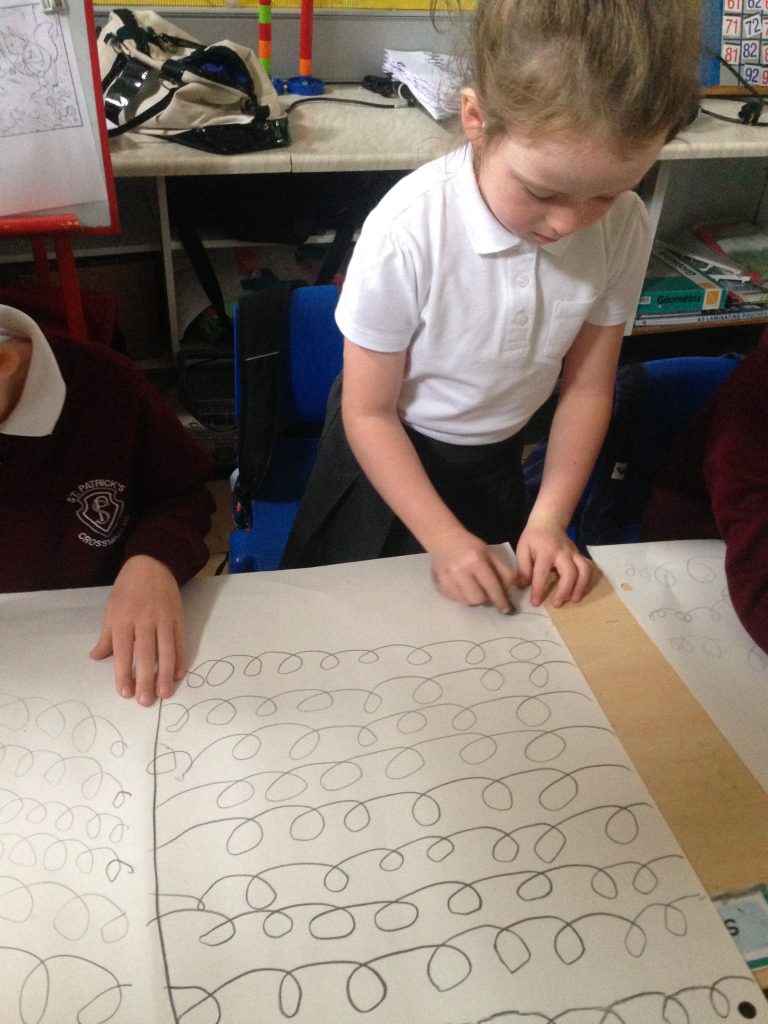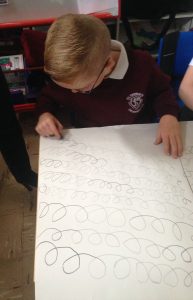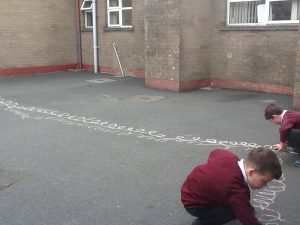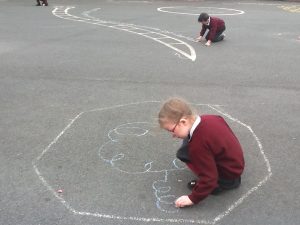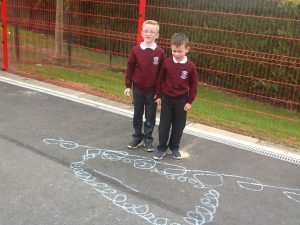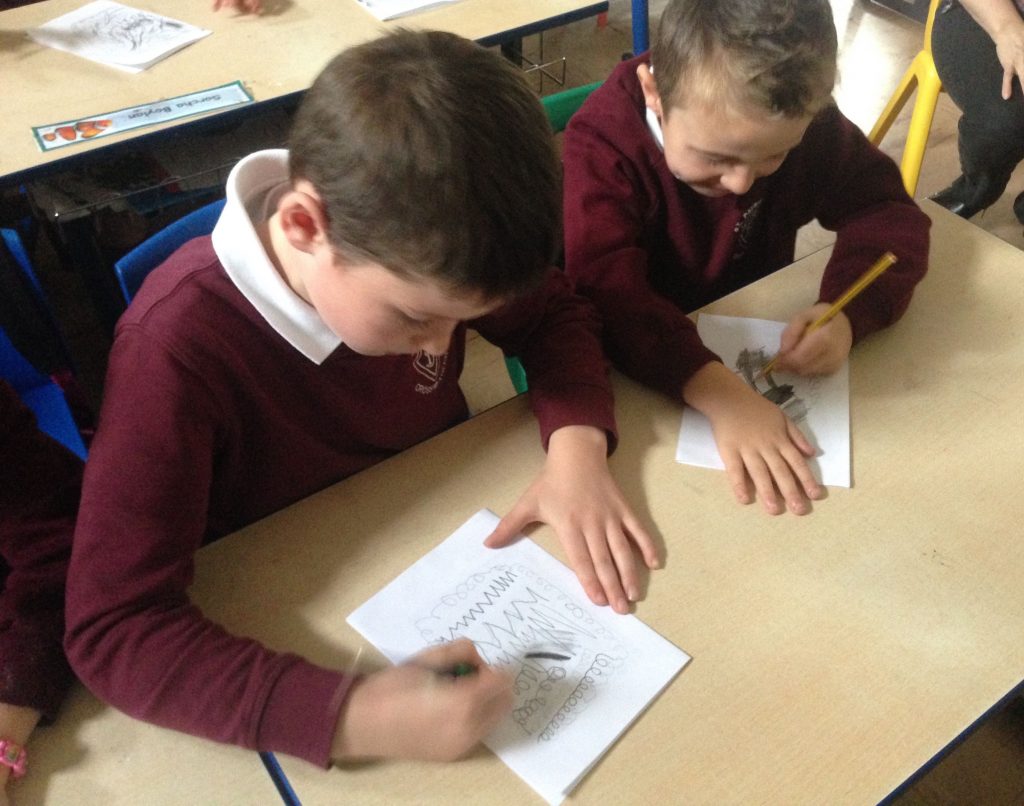
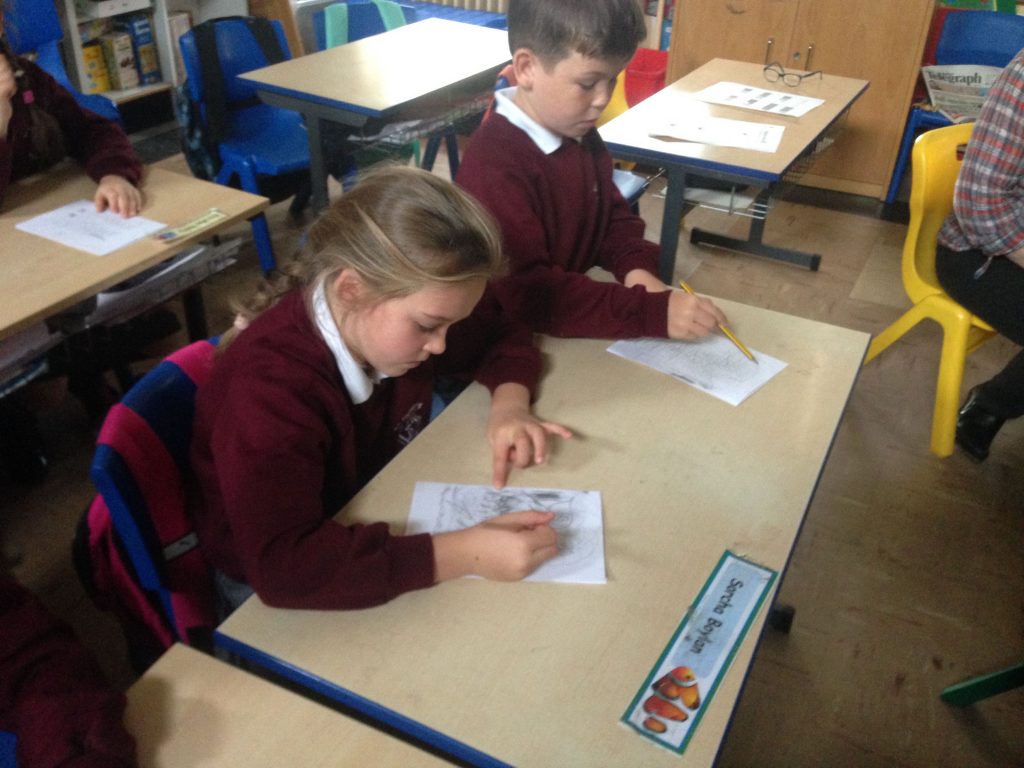
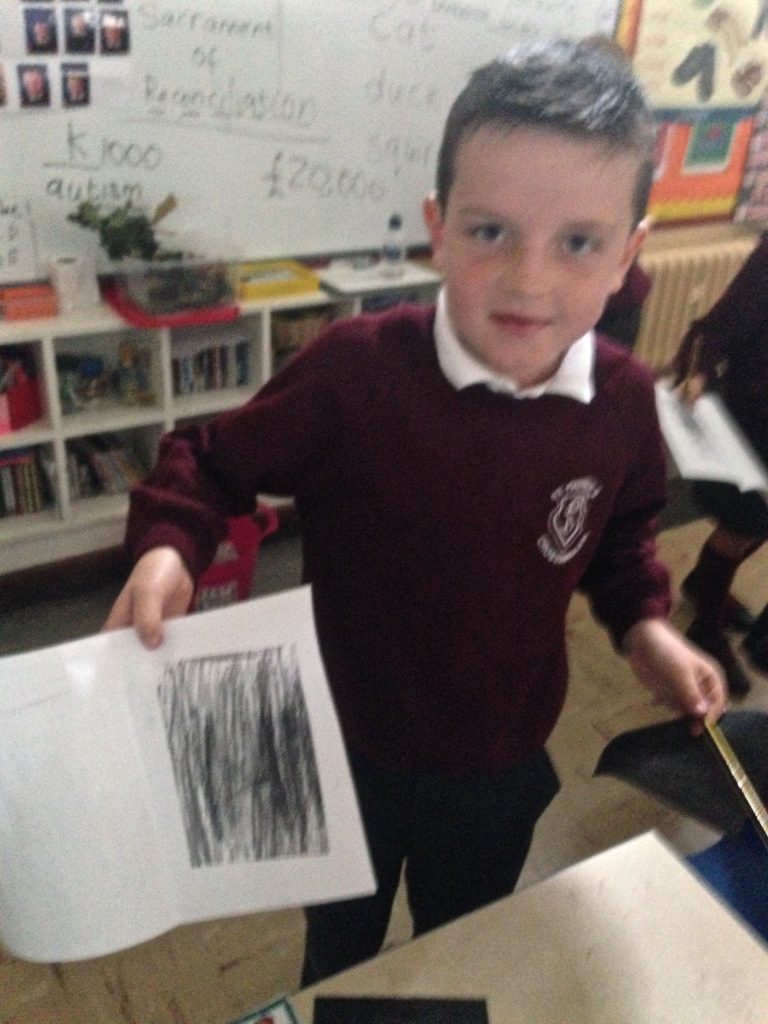
We identified what parts of our bodies we were using to make these marks and then tried to move more and more of our arm and body. At first we tried a REHEARSAL by making shapes and movements in the air with first our WRIST, then our FOREARM, then our WHOLE ARM and SHOULDERS.
When we put this into practice look what happened!
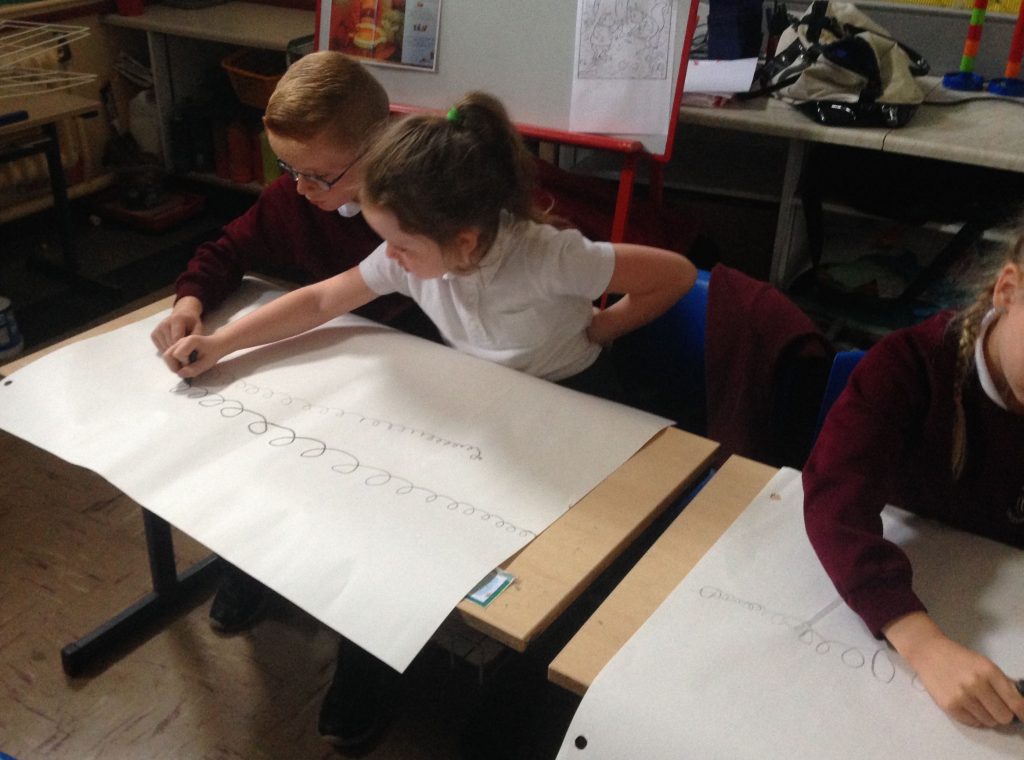
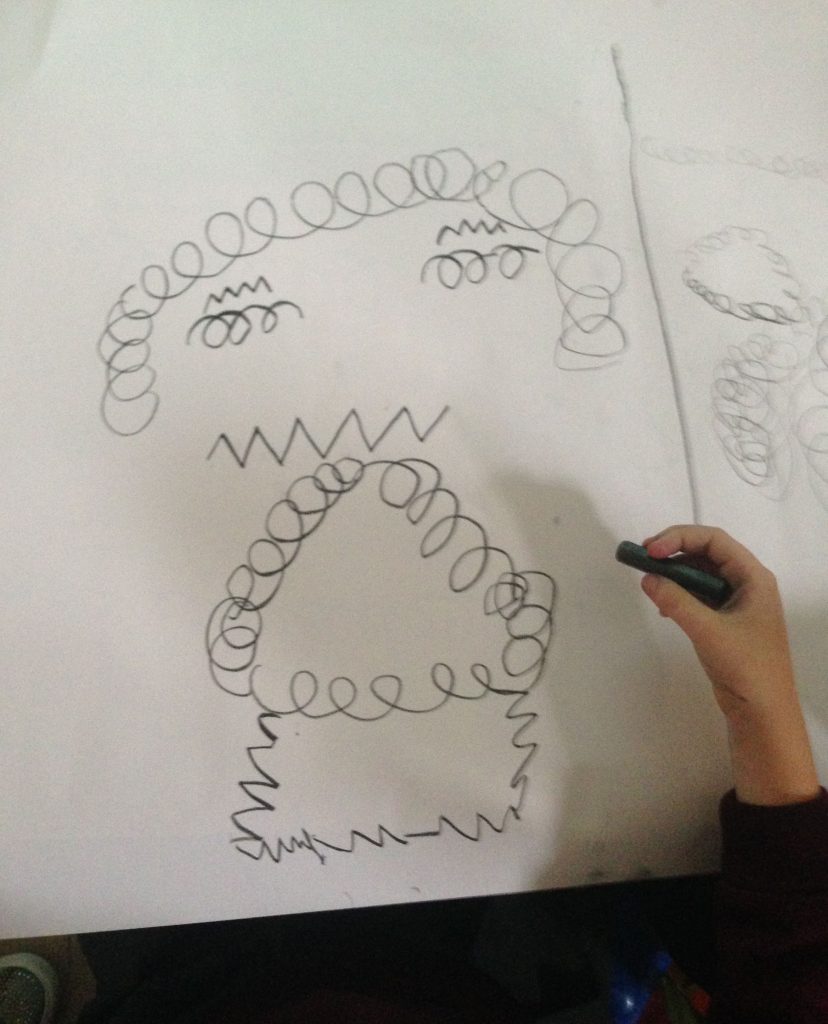
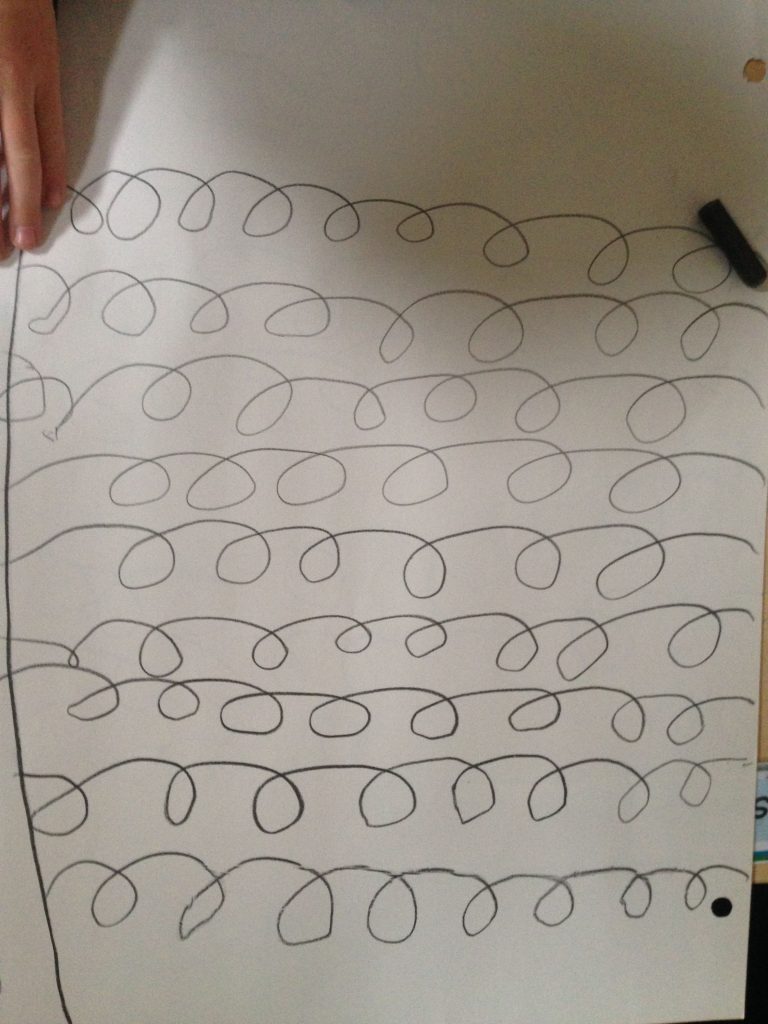
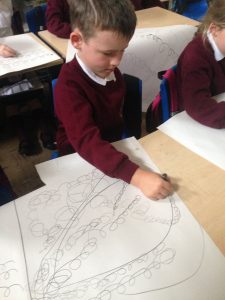
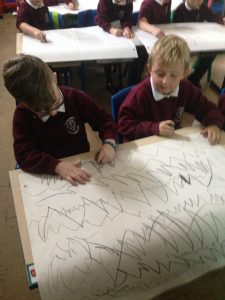
Finally we REHEARSED what big movements we could make by making our whole arm stretch out and round, but because we were sat at desks, this was tricky…
We decided to try out in the yard! Using chalk the children made lots of loops all over the playground…
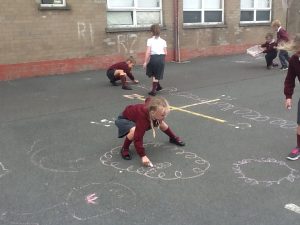
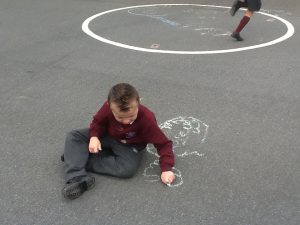
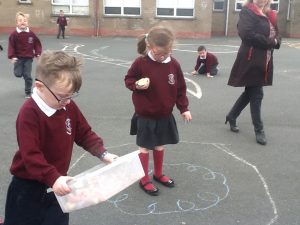
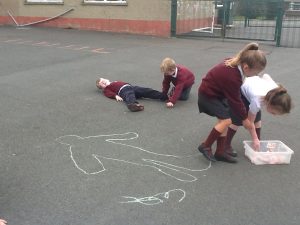
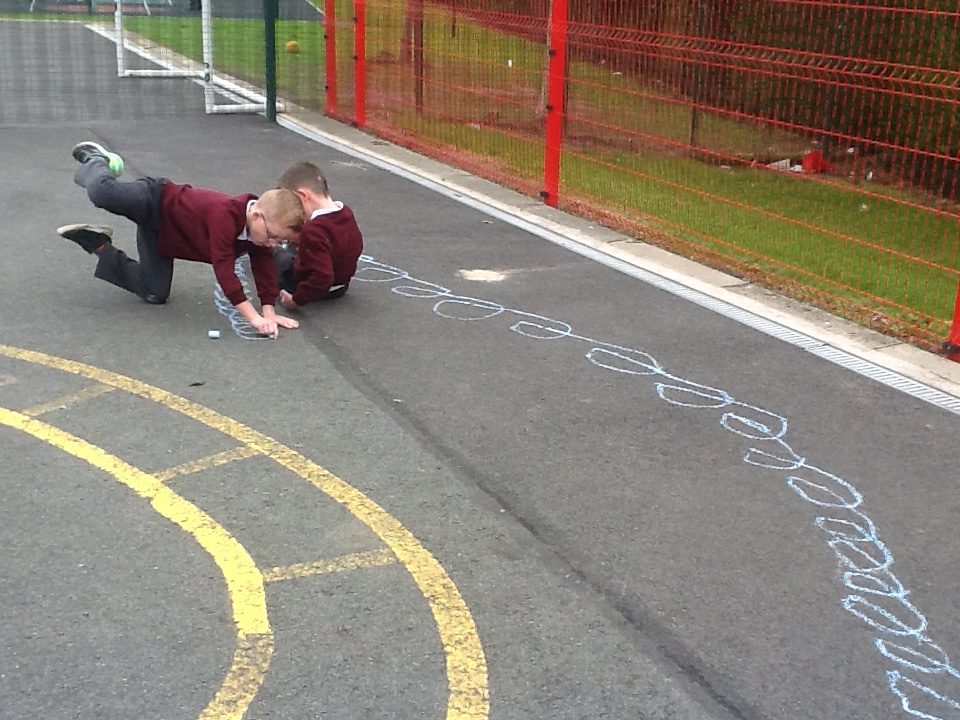
When the children came back in from the yard, I asked them to tell me all about the experience of drawing on the ground and with lots of space to move into.
They said they were:
On their honkers
Moving and drawing
Energy
body weight
Strength
They were tired!
The yard was bumpy
(Some didn’t like this… to be precise, 5 preferred a smooth page and 18 preferred the bumpy yard!)
Some found they were in their own drawing!
The drawing ended if they stopped the contact of chalk to yard surface…
I then introduced the work of American Artist CY TWOMBLY (1928 – 2011) to the children… We looked at these images and discussed what we felt about them…


The children watched a video about his work.
https://www.youtube.com/watch?v=ux6jw-f4inQ
They were fascinated that these paintings were art! One child like the pattern and direction of the lines. Some liked the swirly shapes; Some felt it was too scribbly to have hanging on their walls at home. But some had some amazing interpretations of the images:
It was like a tornado; it was like sunlight streaming out of the universe; it was the fish in the sea; it was like electric shock waves. It was like rain; like a ladder to the mountains; like the pattern on a chair, all crinkled after someone had sat there; it was noisy, like a flash of thunder; it was like a spider’s web! Amazing ideas!
It certainly would have taken a lot of energy to make the work. I read that the artist climbed onto the shoulders of a friend, who moved backward and forward by the canvas so he could make the scribbly marks across the whole surface.
Connecting to this, I had linked them clips of American artist JACKSON POLLOCK (1912 – 1956). But we ran out of time to watch during the session. Here they are:
Mrs Hughes and the children watched the clips on Monday and this is their response:
‘The children really enjoyed it and it provoked a lot of interesting discussions!!!
I’ve noted a few of the children’s comments:
That’s not a painting that’s a splatter….Jack
He just poured paint onto it. It’s kind of freaky….Lee
It’s interesting.The more you look at it, the more it tells you how much work he put into it….Sarah
It reminds me of the Northern Lights…..Niamh
I’d like it for my bedroom wall, it’s relaxing….Caoimhe
The thin lines are like string….Samantha
There was about a quarter of the class who did not find it appealing at all and who wouldn’t wish to hang it in their house. The remainder found it fascinating. We discussed the size of it, the techniques he used building layer on layer beginning with black. The colours which stood out for us and also the techniques he may have used including the time it would take to create the ‘splatter’ effect.
Looking forward to our next session…
